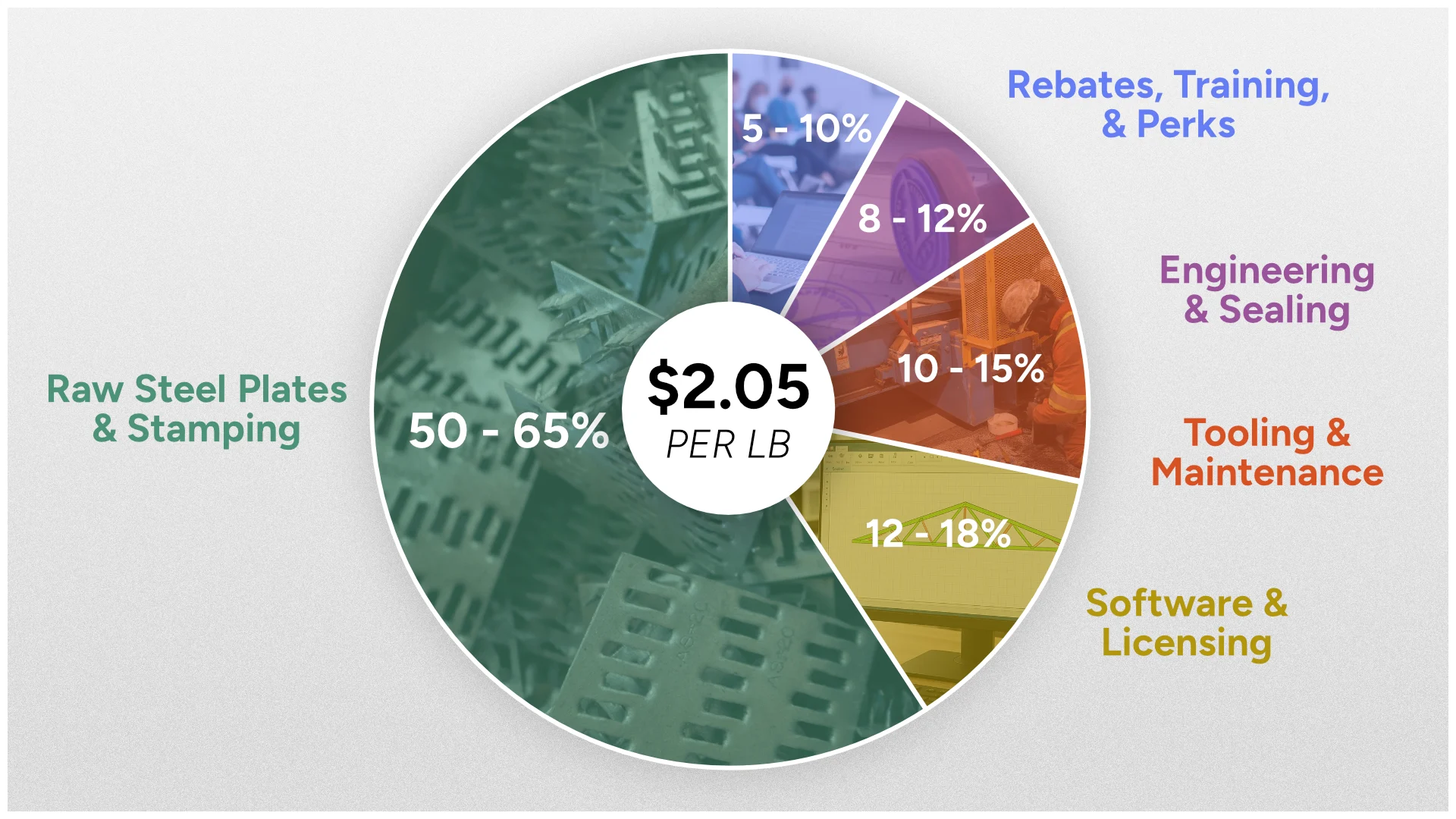The Price Per-pound Mirage
Ask a plate rep for today’s price and you’ll get a tidy figure like “$2.05 /lb.” Sounds simple, right? Except that quote is just the visible tip of a very bundled iceberg:
- The number almost always assumes you’ll hit a yearly tonnage target (slip below it and the price ratchets up).
- It’s contingent on you running their software. A seat that looks “free” but only works with their catalog.
- It quietly rolls in support fees, tooling, and rebate tiers you may never notice until renewal time.
It’s a little like switching plans to get a “free” iPhone. The truth was, you paid for it month after month, whether you used all the features or not. Plate pricing works the same way, sometimes charging you for software and services that may sit unused.
A Hypothetical Look at “The Quote”
Let’s walk through the quoting dance at a legacy vendor, whose playbook is famously thorough:
Deconstructing the Cost Layers

Questions to Put on the Table
- What portion of the quoted price covers my software?
- If I add (or drop) a designer seat, how does the $/lb change?
- What happens to my rate if I fall 20% short of the tonnage forecast?
- Can I get anything à la carte instead of rolling it into the plate cost?
Will the rep unbundle or show line-item costs? If not, then you may need to evaluate what your flexibility is worth.
A Path Toward Unbundling
- Run a Cost Evaluation – Split last year’s spend into steel vs. “everything else.”
- Open Your Data – Use Paragon’s importer to convert a month of legacy truss files; verify that another plate set works out.
- Pilot Dual-Sourcing – Order a small % of connectors from an alternate vendor and track cycle time, QC hits, and net cost.
- Negotiate à la Carte – Ask vendors for separate line items on plates, software, engineering stamps, and other services.
You don’t have to make a choice between one vendor or another. Paragon gives you the flexibility to evaluate your hidden costs, and then decide which bundles you actually want to keep.




